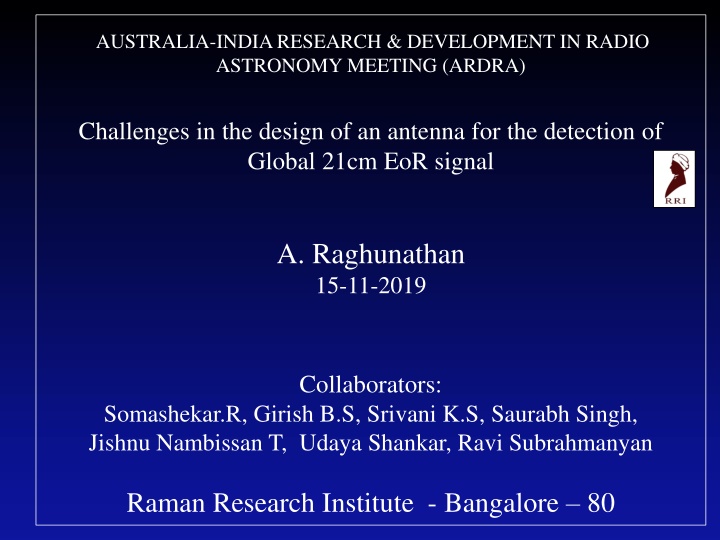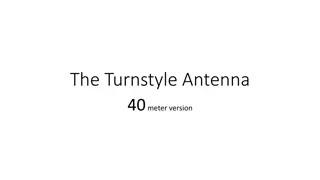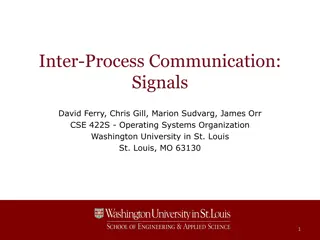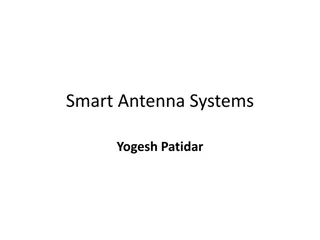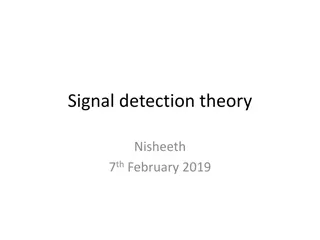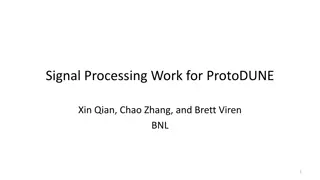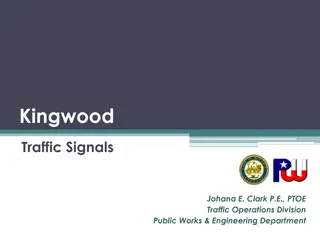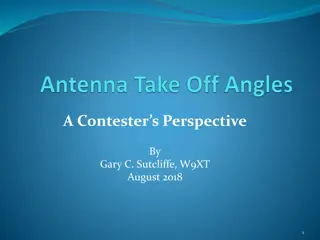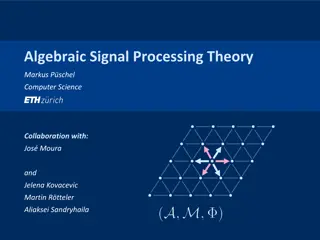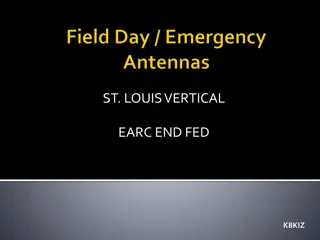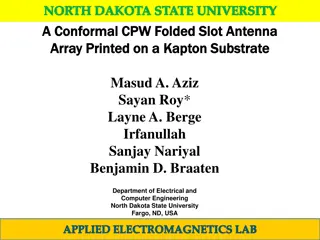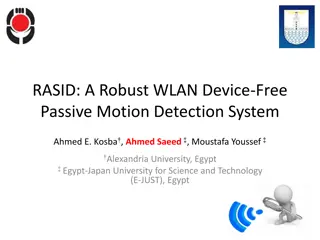Challenges in Design of Antenna for Global 21cm EoR Signal Detection
Research meeting discussing challenges in designing an antenna for detecting the Global 21cm EoR signal, including system requirements, factors influencing detection, and the current status of antenna development. Emphasis on optimizing characteristics for successful signal detection.
Download Presentation

Please find below an Image/Link to download the presentation.
The content on the website is provided AS IS for your information and personal use only. It may not be sold, licensed, or shared on other websites without obtaining consent from the author.If you encounter any issues during the download, it is possible that the publisher has removed the file from their server.
You are allowed to download the files provided on this website for personal or commercial use, subject to the condition that they are used lawfully. All files are the property of their respective owners.
The content on the website is provided AS IS for your information and personal use only. It may not be sold, licensed, or shared on other websites without obtaining consent from the author.
E N D
Presentation Transcript
AUSTRALIA-INDIA RESEARCH & DEVELOPMENT IN RADIO ASTRONOMY MEETING (ARDRA) Challenges in the design of an antenna for the detection of Global 21cm EoR signal A. Raghunathan 15-11-2019 Collaborators: Somashekar.R, Girish B.S, Srivani K.S, Saurabh Singh, Jishnu Nambissan T, Udaya Shankar, Ravi Subrahmanyan Raman Research Institute - Bangalore 80
Talk outline Global EoR signal and minimum system requirements for its detection Factors influencing adversely the detection process Methodology adopted to detect EoR signal Primary requirements of the antenna used as a detector Review of antennas built at the Raman Research Institute Current status
Typical Global EoR signal being detected Evolution of Universe EoR signal Typical magnitude ~ 26 mK in emission & ~ 150 mK under absorption
Minimum system requirements for EoR detection If we have a receiver with Tsys = 100 K, then with a bandwidth of 1 MHz and an integration time of 300 Sec. we can reach the sensitivity of = 100 / (1e6*300) t = 6 mK t = Tsys / B This is enough to have 4 5 sigma detection of EoR signal. But still we are struggling to detect it ---- WHY ??
Factors influencing adversely the detection process Requires @ mK level - Hard Calibration Error Requires Galactic model at mK level Impossible Modeling Strong Galactic background Difficult to model Influence of Real Earth EoR Freq. dependent Characteristics of Antenna Difficult to control Not in our hand Local RFI Additives of Rx. System Partially controllable
We are optimistic about the detection because most of the contaminants are assumed to have smooth spectral response and not have frequency structures similar to EoR signal. We are building the receiver system to have smooth spectral response so that EoR signal could be detected.
Antenna Characteristics Radiation Characteristics Impedance characteristics Antenna These characteristics should be smooth to an extent that when they are fitted using a low order polynomial, the residual left out must be in the range of 10-5 10-6
Primary Requirements of an antenna Return loss characteristics must be moderate to get acceptable sky signal Its response must be free from inflection point and smooth to within a few parts in 105 Gain variation with frequency also should be smooth to the same order. Operating bandwidth : 50 200 MHz (1:4) Radiation efficiency must be more than 50 % to get enough sky signal
How to make antenna radiation patterns (Gain) independent of frequency ? Make the antenna electrically smaller A short antenna generally exhibits frequency independent radiation patterns Disadvantage This seriously affects the impedance match.
How to improve the Impedance match (Return loss) Profile the antenna structure to minimize the reactive part of its impedance Based on this technique, several antennas have been designed like - Sinusoidal, Spherical, Conical, planar sinusoidal, antenna for space application
Antennas built at RRI for EoR expt. 87.5-175MHz 40-200MHz 50-100 MHz Return loss Radiation pattern
Antennas built for 2-4 GHz 2-4 GHz 2-4 GHz
Spectral features due to surface current reflections Abrupt variation in dimension is minimized in the structure by having Smooth feeding point Rounding the antenna at its tip Reflector dimensions are chosen as small in electrical length to have broad spectral feature due to the reflection at the end Typical residual obtained after fitting the cone antenna return response with low order polynomial
Improvement in Radiation efficiency by going for water medium beneath the antenna Better conductivity - 0.04 S/m electrical More medium below the antenna uniform Higher constant (80) dielectric
Can we control the variation of return loss characteristics as a function of frequency ? Dependence of physical parameters of the antenna on the reactive part (Xi) of the antenna impedance is rather complex and non linear, it is rather hard to synthesize the response to our requirement. where G is the radiation resistance, M,N are integrals dependent on the physical parameters (S.A.Schelkunoff 1941) Sinusoidal antenna being designed for space application 50-100 MHz 100-200 MHz
Antenna for space applications EoR antenna Bus Solar panel Antenna is being designed at present for EoR detection in space. It is much more challenging in the presence of bus and solar panel of the pay load.
Conclusion Antenna design for Global EoR detection experiment is challenging It is required that the antenna s spectral response be smooth to few parts in 105 so that its features do not confuse the detection process over more than an octave bandwidth Its radiation efficiency also must be acceptable to get more sky signal. Antenna design for space application is much more harder than on the ground due to the influence of bus and solar panel.
